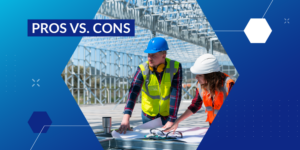
If necessity is the mother of invention, consider scarcity and inflation the grandparents of throwing your hands in the air and saying “Well, what can I order?” In recent years, material shortages and volatile material prices have slowed so many projects to a grinding halt. As a result, contractors and property owners are increasingly considering alternatives to traditional building materials. And while these materials sometimes buck tradition, they’re often just as good — and sometimes even better.
We’ll take a look at some of these lesser-known building materials, how they’re used, and their pros and cons below. With some creativity from the designer, open-mindedness from the client, and approval from the building department, these alternative construction materials could open up a world of possibilities for your next project.
Concrete alternatives
Concrete is the second-most widely used substance on the planet, surpassed only by water. It’s used for building residential foundations and driveways, but also for constructing hospitals, schools, and bridges. It’s also the material of choice for holding mother nature back in the forms of levees and dams.
While it’s a reliable and relatively affordable building material, concrete (and its production) is responsible for around 8% of global emissions. Project owners that would prefer to steer clear of concrete’s harmful impact can opt for one of the following materials.
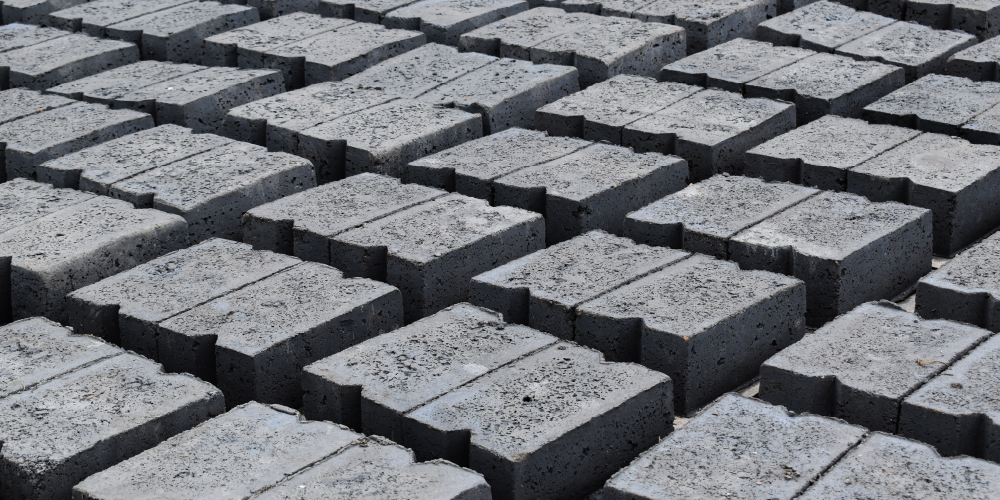
Fly ash
Coal has its pros and cons, but one of the benefits of burning coal is that it produces fly ash. Fly ash is a fine powder formed by mineral impurities. When mixed with water and lime, fly ash becomes a material very similar to Portland cement, making it ideal for concrete blocks or bricks, as well as poured concrete.
It’s recognized as environmentally friendly, requires less water than cement to mix, and costs less than Portland cement. However, its color consistency is hard to control, and it does take longer to cure.
Pros:
- Cost-effective over Portland cement
- Recognized as environmentally friendly
- Requires less water than cement
Cons:
- Longer to cure than concrete
- Color consistency is difficult to control
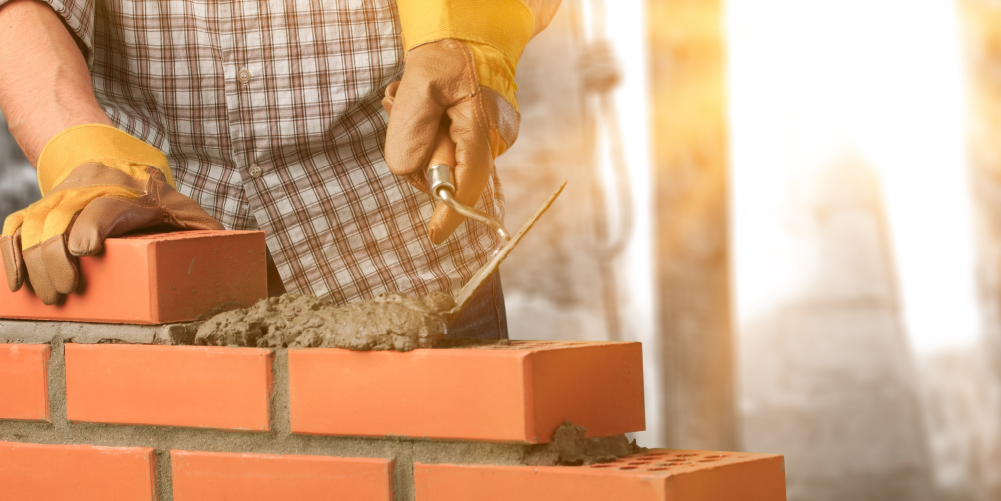
Ferrock
Ferrock is an environmentally-friendly cementitious product made up of up to 95% recycled materials. This concrete substitute consists of recycled steel dust, iron-rich ferrous rock, and silica from recycled glass. When mixed with water, it forms a compound up to 5 times stronger than concrete, more flexible, and more resistant to oxidation and corrosion.
However, since it’s made from byproducts of niche industries, availability may be limited in some areas.
Pros:
- Made of recycled materials
- Stronger and more flexible than concrete
- Sets quickly and resists oxidation and corrosion
Cons:
- Limited material availability due to reliance on byproducts from other industries
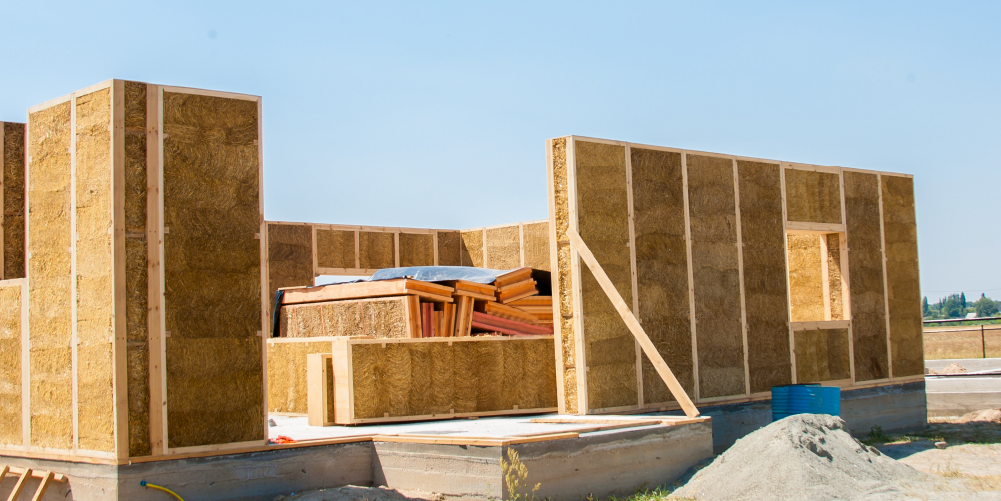
Straw bales
As one of the old-school concrete alternatives, straw bale buildings have been around since the late 1800s. Made from the byproduct of wheat production, a machine compresses straw into dense bales, and the constructor uses them for walls.
Modern structures include post-and-beam frames with straw bales sandwiched between framing members. Once satisfactorily compressed during the construction process, the installer coats walls with a mud and clay mixture, finishing the bales to a smooth consistency. With proper care, straw bale construction buildings can last over 100 years — as long as they’re kept dry.
Pros:
- Environmentally-friendly material
- Walls have a high insulation value
- Creates thick walls that would otherwise be very expensive to create
Cons:
- Moisture and leaks can be devastating
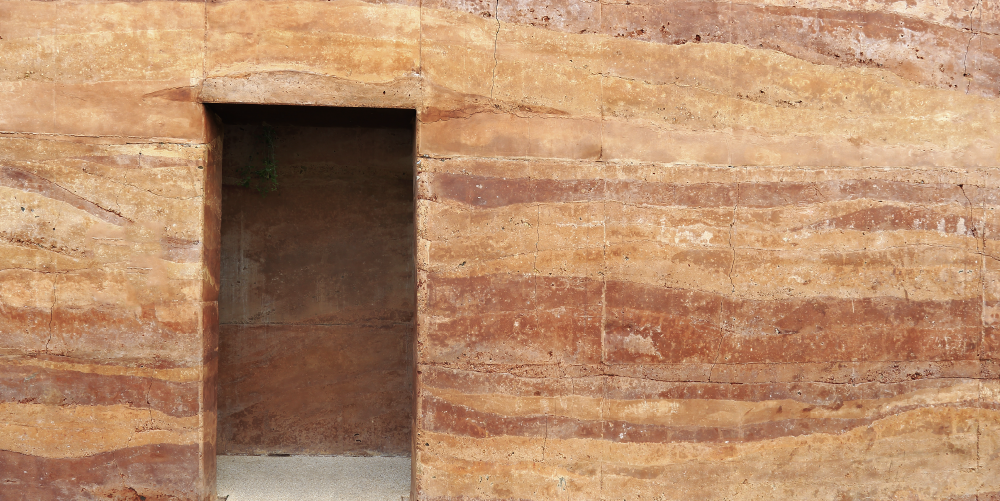
Rammed earth
Some form of rammed earth has been used in construction for thousands of years. In fact, one of the most popular rammed earth-built structures is The Great Wall of China.
This construction material is made from layers of silt, clay, sand, and water poured into forms and then compressed with power rams. The result is a beautiful, durable material very similar to concrete at much less cost (as long as there are materials on site).
Rammed walls offer excellent thermal mass, but they’re not great insulators.
Pros:
- Very inexpensive (as long as there are materials on site)
- Creates a beautiful layered aesthetic
- High thermal mass, absorbing heat during the day and releasing it during the night
Cons:
- Surprisingly, rammed earth is not a great insulator
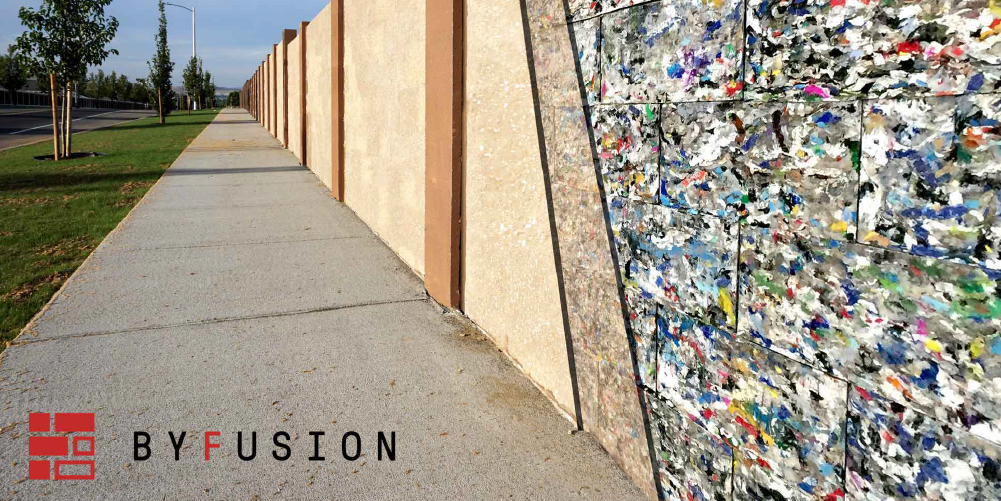
ByBlocks
ByBlocks are concrete block replacements made from 100% recycled plastic. They’re made by collecting recyclable and non-recyclable plastic, heating them, and then compressing them into cinder block-sized bricks. While they’re not easy for contractors or homeowners to get their hands on yet, they do propose an answer to the earth’s plastic problem, meaning they may become more popular in the future. While ByBlock walls do require threaded rod and compressive wood top and bottom plates, as mortar will not adhere, they’re very easy on drill bits and tools.
Pros:
- Practical use for recyclable and non-recyclable plastic
- Easier to drill through or fasten to than concrete block
Cons:
- Not compatible with mortar, requiring carefully placed threaded rods and locking bolts instead
- Not commercially available at the moment
Lumber alternatives
Lumber pricing volatility has created more headlines over the past few years than one could imagine. As a result, contractors, DIYers, and craftspeople have searched far and wide for materials they could use instead.
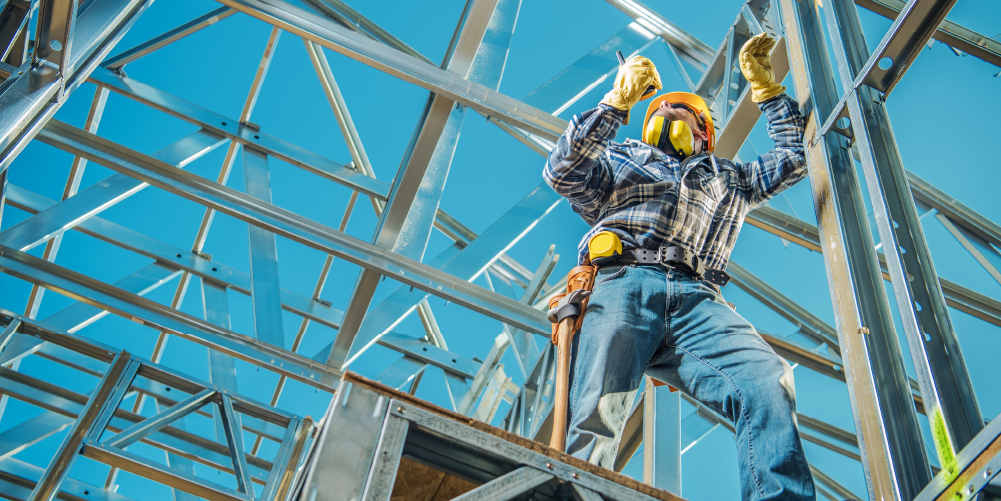
Steel framing
The commercial building industry has been using steel studs and tracks for years. It’s lightweight and unbelievably consistent in size and pass-through locations for wires and plumbing.
The construction process goes quickly, and the material’s obvious fire resistance makes it a good replacement for traditional lumber (though metal studs can be more expensive). Heavier-gauge steel studs can even be used as exterior walls or in load-bearing applications.
Pros:
- Lightweight and consistent
- Quick installation
- Fire resistant
Cons:
- Can be more expensive than wood
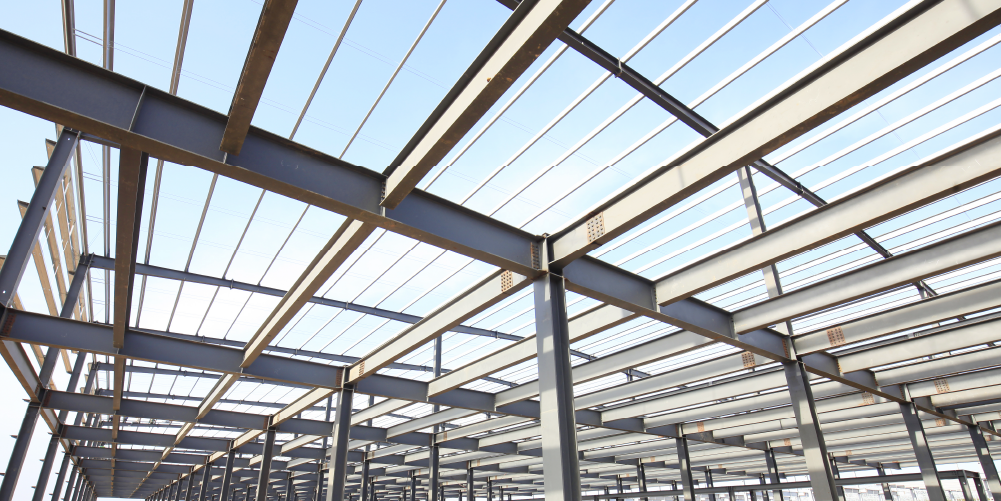
Structural steel
Structural steel refers to the large metal beams that are often visible during the early stages of construction or in industrial-designed buildings. The long lengths of steel can withstand an incredible amount of weight over long spans, making them useful in creating open-concept homes or garages free from posts.
Structural steel beams almost always require special ordering and they’re rarely light enough to install by hand — regardless of the size of the crew.
Pros:
- Carries lots of weight over long spans
- Can complement an industrial design
Cons:
- Requires custom ordering
- Heavy machinery required for installation
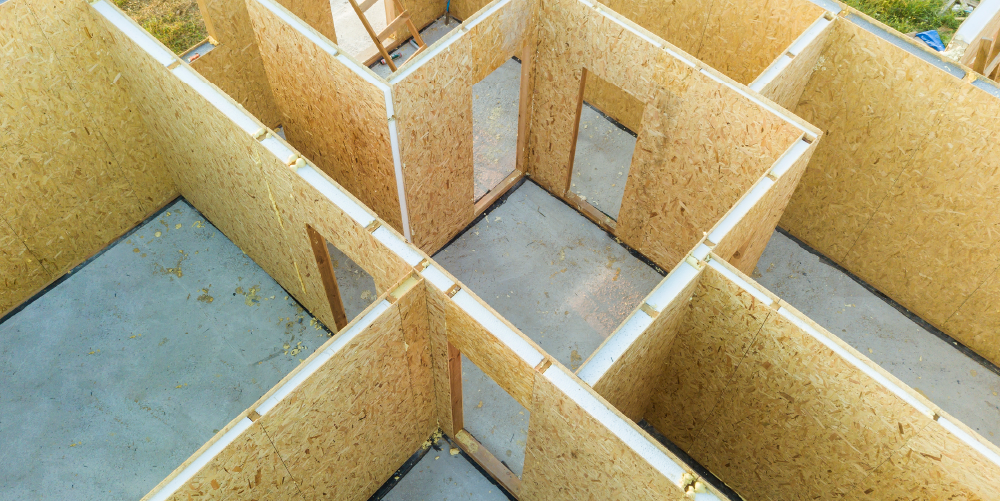
Structural Insulated Panels (SIPs)
Structural Insulated Panels are modular wall sections made from foam sandwiched between two pieces of OSB. They’re incredibly strong and energy efficient, as the foam inside the OSB acts not only as the web to provide strength but also as insulation. In most cases, SIPs are more than sufficient for load-bearing walls, and since they generally arrive on-site ready for installation, there can be significant savings realized on labor.
Pros:
- Arrives preassembled for fast installation
- Strong and energy efficient
- Reduces labor costs
Cons:
- Expensive as a materials purchase
- Still requires post and beam or timber framework to serve as the actual framework in most cases
Concrete
While concrete is clearly not solving any of the world’s eco-centric problems (and as noted above, can have supply issues of its own), it can be a useful alternative to framing lumber. Concrete materials like poured slabs or concrete blocks are strong, reliable, and long-lasting, resisting rot and corrosion for longer than most other materials. Yes, the production process creates a lot of harmful emissions, but concrete is, at times, cheaper than wood and lasts longer.
Pros:
- Strong and durable
- Can be less expensive than wood
Cons:
- Produces lots of CO2 emissions
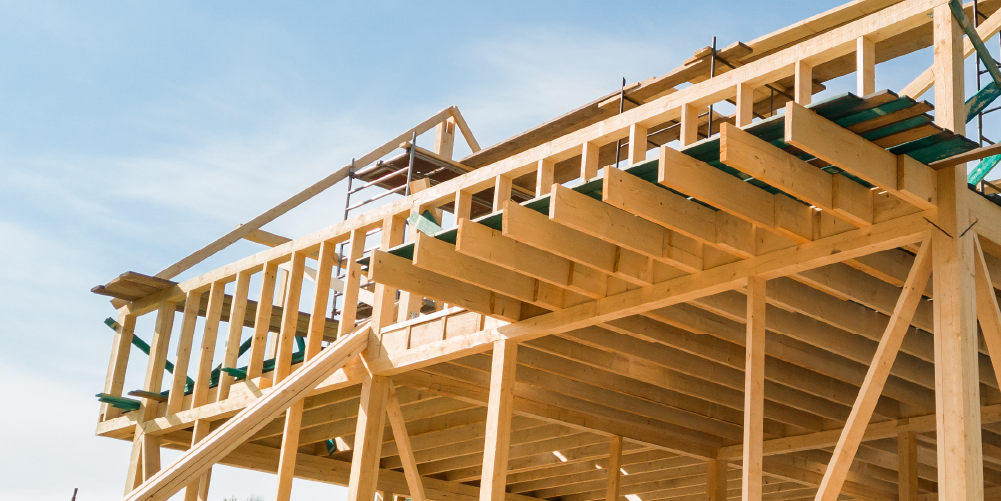
Engineered wood
Engineered wood, also known as SCL (structural composite lumber), is a type of wood product made from strands or veneers of wood products (typically byproducts from the lumber industry) and adhesives. Since each length of wood uses less tree material than a piece of traditional lumber the same size or of the same strength, engineered wood is considered more environmentally sustainable.
These materials are much stronger than standard wood and they can be used for support beams, rafters, headers, joists, and columns. While they’re more expensive than traditional wood, when used as a carrying beam, they require less support over the same span, cutting back on the amount of materials necessary.
Pros:
- Stronger than traditional wood
- Uses lumber industry byproducts
- Can reach longer spans without structural support than traditional wood framing
Cons
- More expensive than standard wood framing lumber
Other wood alternatives
Until now, the wood alternatives mentioned were explicitly for replacing framing lumber. However, there are also alternatives to replacing wood trim, siding, and flooring materials.
- Bamboo is a type of fast-growing grass. It’s harvestable in 3–5 years, which is considerably less time than trees. It’s useful for making flooring, trim, and other materials.
- Cork is another sustainable material. It comes from the bark of a cork oak tree. Cork’s most popular use is as a flooring material, as it is durable, moisture-resistant, and comfortable underfoot.
- Fiber cement is a type of wood-replacement product made from sand, cement, and cellulose fibers. Originally a replacement for asbestos siding (which was originally a replacement for wood siding) its most popular use is cladding homes to protect them from the elements. These boards mimic the look of wood but they’re much more durable and last much longer.
Get the latest building material costs and prices in common construction units like lumber 2x4s, cinderblocks, and more with Levelset’s Construction Materials Price Tracker.
Sheetrock alternatives
Sheetrock. Drywall. Gypsum board. Different names for the same material. But what other frame-covering alternative construction materials are out there for finishing interior walls?
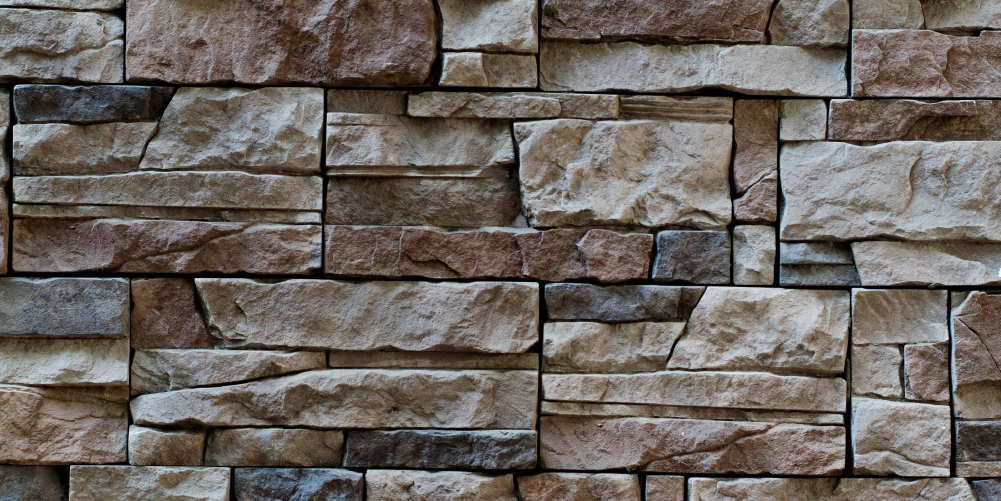
Veneers
Folks who’d prefer a bit more texture or dimension for wall finishings may opt for a veneer. Made from materials like natural stone and brick, these finishes make the wall look like they’re completely solid masonry, but in reality, it’s just a layer an inch or two thick. Keep in mind that these layers do need something to adhere to such as a concrete surface, concrete board, or drywall stretched across studs, but they add more depth than a drywall surface can.
Pros:
- Creates a solid masonry wall look
- Provides a feeling of depth and texture
Cons:
- Does need a substrate to adhere to
Plaster and lath
While old-school as it may seem, there is still a place for plaster and lath walls. Today’s plaster walls feature metal mesh lath stretched across the framing, with coats of gypsum, sand or cement, and water laid over top. Plaster walls are more durable than drywall, insulate better, and are more fire resistant. Also, since there isn’t any organic material like the paper that faces drywall, plaster walls won’t harbor mold growth. With an expert hand, these walls will look as smooth and flat as drywall, but they’re expensive because they’re labor-intensive and require experience.
Pros:
- Improved durability, insulation, and fire resistance
- Won’t allow mold to grow
Cons:
- Expensive since it requires an expert’s touch
3D Panels
Another option for contractors or clients looking to add more depth or style to plain interior walls is 3D panels. These wall coverings come in sheets that feature raised patterns or textures. They can change the entire look of a wall quickly, and they come in a wide range of styles and patterns. They’re usually made from materials like polystyrene or medium-density fiber boards. In most cases, the panel is not enough to meet fire code, so a substrate like drywall, concrete, or concrete board is usually necessary underneath.
Pros:
- Covers walls quickly
- Comes in a range of styles or patterns
Cons:
- They do require a substrate underneath to meet fire code requirements
Insulation alternatives
When most people think of insulation, they instinctively picture mounds of itchy pink fiberglass. While fiberglass insulation is the most popular type (and one of the most eco-friendly, since it consists of recycled glass), it can be a pain to work with, requires lots of protective gear, and must be kept free of moisture. Fortunately, contractors have a variety of alternatives to explore.
Mineral wool
Mineral wool isn’t actually wool, but an insulation material made from extruded lava rock. The manufacturer spins the lava rock at high speeds, causing the rock to form thin strands that are then used to make a material very similar to fiberglass insulation.
It’s an expensive material, but its moisture-resistant and fire-resistant properties exceed that of fiberglass. It’s also better at dampening sound transference.
Pros:
- Made from naturally occurring materials
- More resistant to moisture, fire, and sound than fiberglass
Cons:
- More expensive than fiberglass
Spray foam
Spray foam insulation continues to grow in popularity. This polyurethane-based insulation adheres to the surfaces it touches when it’s wet and then expands, helping to fill voids and gaps for improved insulation. The foam is both a thermal barrier and a moisture barrier, allowing installers to get two steps out of the way with one application.
Do note that while spray-in insulation is very good at insulating, many of the chemicals used and released during the curing process are harmful to the environment.
Pros:
- Expands to fill voids for high insulation value
- Acts as a thermal and moisture barrier
- Adheres to most surfaces when wet
Cons:
- Chemicals released during curing can be harmful to the environment
Cellulose
Cellulose is an insulation material made from recycled paper products — mostly newspaper. The material is shredded into small pieces and treated with a chemical to improve its fire resistance. It comes in loose, crumbly form and is ideal for blown-in insulation in attics and walls. While it initially provides significant insulation, it can compress over time, reducing its insulation value and requiring topping off with more cellulose.
Pros:
- Recycled product made from paper
- Ideal for blown-in insulation applications
Cons:
- Can settle over time and become less effective
Rigid foam
Rigid foam insulation is a popular alternative to fiberglass batts insulation. These sheets of insulation are often adhered to concrete surfaces, but they can also be cut to fit between rafters, joists, and studs in some situations. Rigid foam’s ability to insulate is dependent on its thickness, but it’s moisture-, rot-, and mold-resistant, making it a great choice for below-grade or moist situations. It is more expensive than fiberglass on a square-foot basis, however.
Pros:
- Easy to install
- Many applications
- Resistant to moisture, rot, and mold
Cons:
- More expensive than fiberglass
Reflective insulation
Reflective insulation is similar to bubble wrap with a metallic coating on both sides. This type of insulation can reach an insulation value of R-17 when installed properly. Though slightly more expensive than fiberglass insulation, it is less prone to rodent infestation and water damage.
Available in pliable wraps and in more rigid panels, reflective insulation works best in layers with an adequate air gap of about four inches between them. In addition, a thermal break between the reflective material and the framing helps prevent energy transfer. Installation does not require any special tools or equipment — HVAC tape is used to seal the seams.
Pros:
- Easy to install
- High R-value with proper installation
- No risk of fiber inhalation
Cons:
- Slightly more expensive than fiberglass insulation
- Inadequate air gap or thermal break reduces effectiveness
- No noise dampening properties
Alternative building materials may keep your project on track
Material shortages can rear their ugly heads at any time. Any disruption in the supply chain will have ripple effects throughout the industry, so keeping options open (as well as your mind) may allow you to stay nimble and make informed game-time decisions.
While these alternative building materials aren’t likely to be anyone’s first choice for a long time, knowing they exist may be the difference when aiming to keep a project on track.